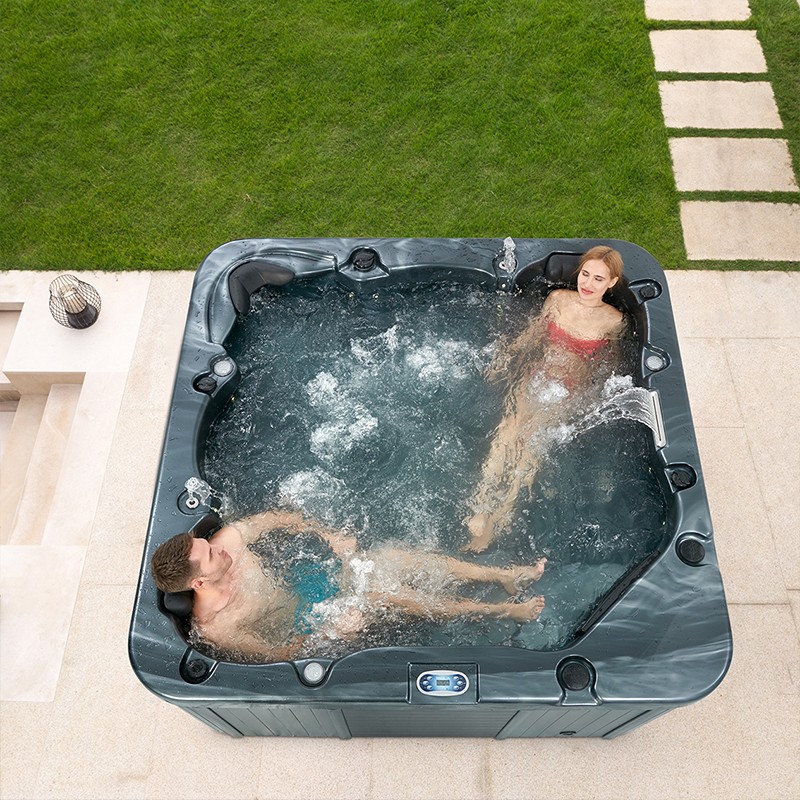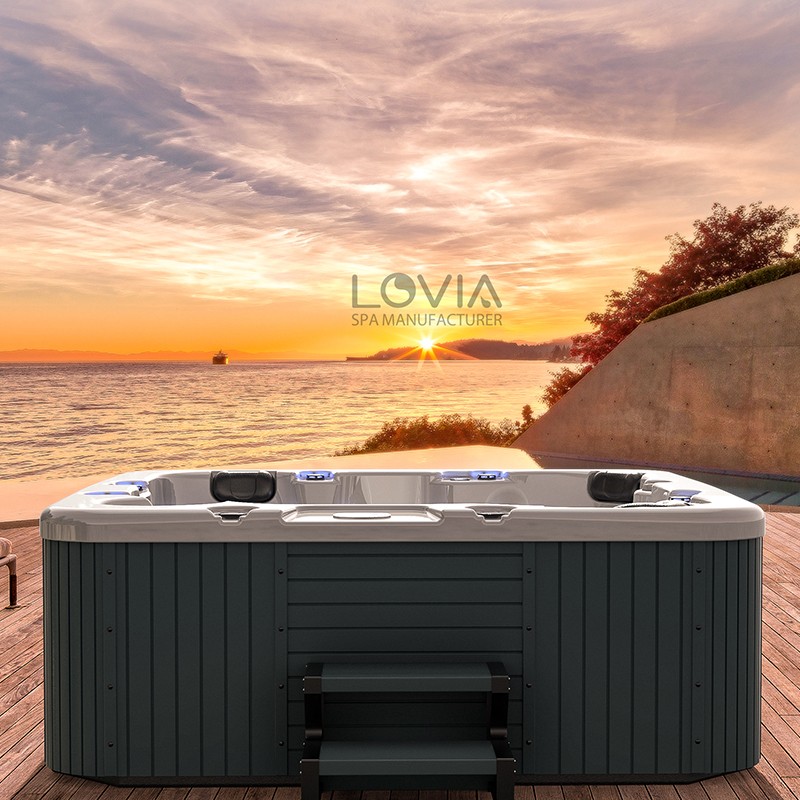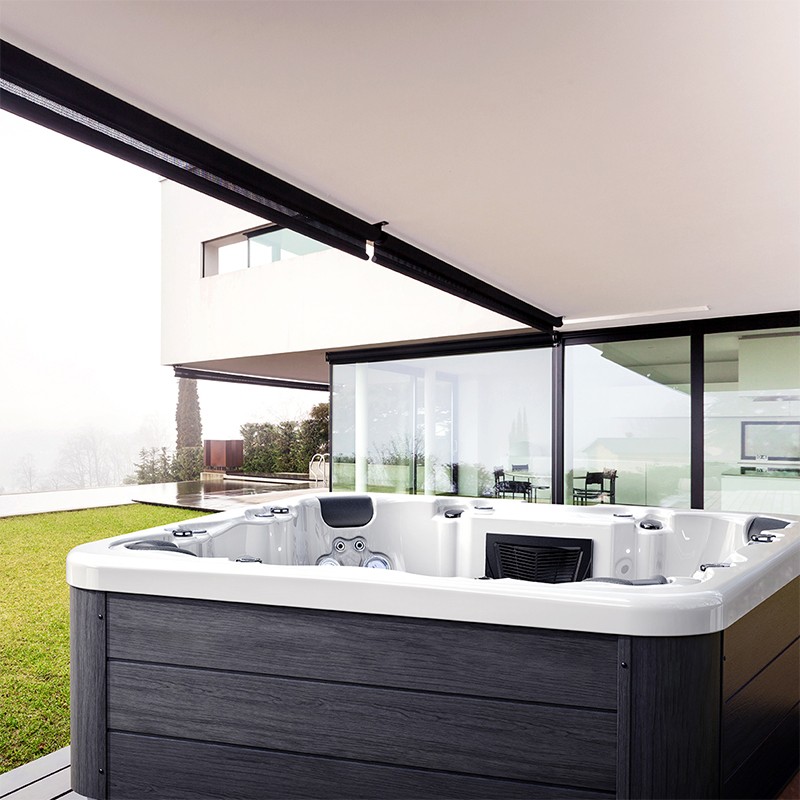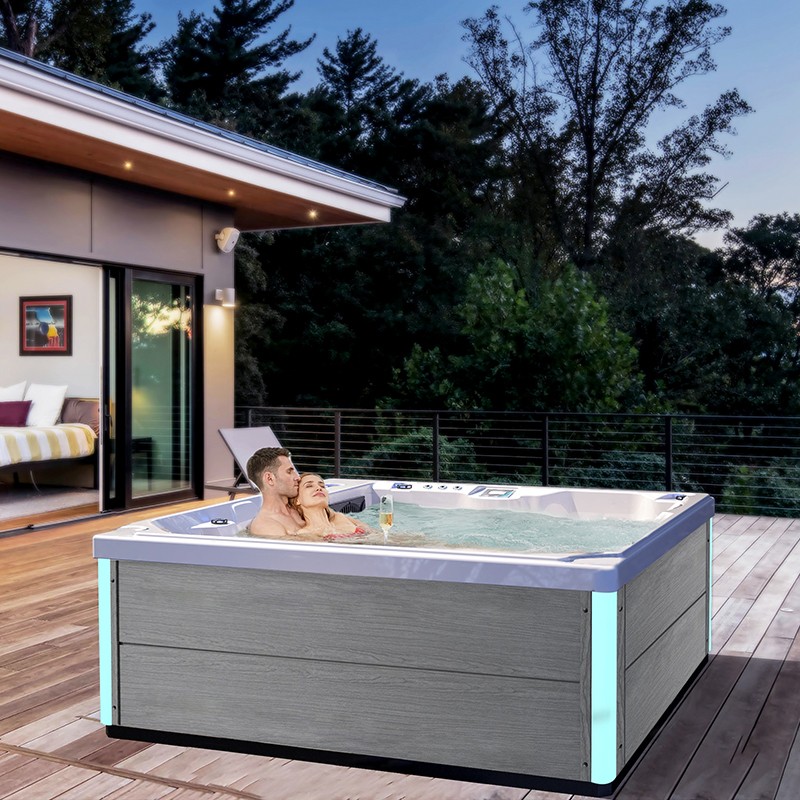
Will an outdoor spa jacuzzi tub get moldy?
2025-09-23 15:30As a luxurious leisure device, an outdoor spa jacuzzi tub not only helps people relax and relieve fatigue, but also offers the comfort of warm water and massage. However, over time, many people experience problems with their outdoor spa jacuzzi tubs, such as mold, rot, or water accumulation. This can affect the tub's effectiveness and even pose a potential threat to human health.
So, why do outdoor spa jacuzzi tubs get moldy? And how can this be prevented? This article will delve into these issues to help users better care for and use their spa jacuzzi tubs.

Outdoor Spa Jacuzzi Tub: Structure and Usage Environment
1. Spa Jacuzzi Tub Structure and Function
A spa jacuzzi tub is a complex device consisting of multiple components, primarily a water pump, heater, jets, plumbing, and the tub itself. The pump provides water flow, which then flows through the jets for a massage effect, helping to relax muscles and stimulate blood circulation. The heater controls the water temperature, ensuring the ideal temperature for users to enjoy their spa experience. Furthermore, bathtubs are typically constructed of heat- and corrosion-resistant plastics, acrylic, or other highly durable materials. However, these materials can still be susceptible to mold, dirt, and moisture when exposed to the elements.
2. Challenges of Outdoor Use
Unlike indoor bathtubs, outdoor spa jacuzzi tubs face additional environmental challenges. For example, weather changes, humidity, sun exposure, and rain damage can all affect the tub's structure and performance. Especially in high-humidity environments, outdoor spa jacuzzi tubs are more susceptible to moisture accumulation. If not promptly addressed, this can breed mold and bacteria. Therefore, proper maintenance and cleaning of outdoor spa jacuzzi tubs are particularly important.

Why do outdoor spa jacuzzi tubs mold?
Causes of mold in outdoor spa jacuzzi tubs include:
1. Moisture accumulation and poor ventilation
2. Irregular cleaning and filtration system problems
3. Frequent temperature fluctuations
1. Moisture accumulation and poor ventilation
After using an outdoor spa jacuzzi tub, moisture often remains inside the tub. If not drained or cleaned promptly, moisture can accumulate in the tub's plumbing and showerhead, forming humidity. This humidity creates an ideal environment for mold and bacteria to grow. This is especially true in dark, damp corners, where moisture and air don't circulate, allowing mold to easily grow, resulting in black, green, or white mold spots.
Moisture accumulation is particularly problematic in spa jacuzzi tubs, especially when they're infrequently used. If the tub remains damp for extended periods without proper ventilation, it creates a breeding ground for mold.
2. Irregular Cleaning and Filtration System Issues
The tub's plumbing system is a complex network through which water circulates. If the plumbing isn't cleaned promptly or the filtration system malfunctions during use, water can accumulate in the tub, breeding grounds for bacteria and mold. Components like the pump, showerhead, and filter can accumulate dirt unnoticed, leading to poor water quality and creating an environment conducive to mold growth.
Some users may not realize that the internal plumbing and showerheads of their spa jacuzzi tubs require regular cleaning. Ignoring these details can easily lead to mold growth and the proliferation of other bacteria, ultimately causing mildew spots on the tub's interior.
3. Frequent Temperature Fluctuations
A spa jacuzzi tub typically maintains a relatively high temperature, but if it's not used for extended periods, the temperature may fluctuate. These drastic temperature fluctuations can cause condensation on the tub's interior, fostering mold growth. Especially in warm and humid weather, the large temperature swings can easily lead to water droplets forming on the tub's surface, which can in turn lead to mold growth.

What are the dangers of mold in outdoor spa jacuzzi tubs?
1. Health Risks
The presence of mold not only affects the tub's appearance but can also pose a health risk. Mold releases spores that, when airborne, can enter the body through the respiratory tract, causing allergies, breathing difficulties, and itchy skin. For people with asthma, allergies, or respiratory problems, the effects of mold are more severe and may even trigger acute symptoms.
Furthermore, mold irritation to the skin should not be ignored. Soaking in a spa jacuzzi tub contaminated with mold may cause skin irritation or allergic reactions, especially for those with sensitive skin.
2. Equipment Damage and Shortened Service Life
Mold is not only harmful to the human body but also shortens the lifespan of a spa jacuzzi tub. Mold and bacterial growth can corrode the interior and exterior surfaces of the tub, especially in humid environments. Long-term accumulation of water can corrode and damage internal components. For example, mold accumulation in the plumbing system can cause poor water flow, affecting the proper functioning of the water pump and potentially requiring replacement of the entire filtration system.
Prolonged mold contamination can also cause cosmetic damage to the spa jacuzzi tub, particularly mold stains on the tub surface that are difficult to remove or repair, affecting both its aesthetics and user experience.
3. Deterioration of Water Quality
Mold contamination in a spa jacuzzi tub can cause the water to become turbid and develop an unpleasant odor. As mold and bacteria multiply, the bacterial count in the water increases, potentially leading to the presence of contaminants, which can affect the user experience. At the same time, long-term water accumulation and bacterial growth can disrupt the chemical balance in the water, further affecting water quality.

How to prevent mold in an outdoor spa jacuzzi tub?
1. Regular Cleaning and Disinfection
Maintaining the cleanliness of your outdoor spa jacuzzi tub is the primary measure to prevent mold growth. It is recommended to thoroughly clean and disinfect the tub regularly. Pay special attention to the interior and exterior surfaces, jets, pipes, and filtration system. Use a specialized spa cleaner or disinfectant to clean these components to ensure mold, bacteria, and dirt are completely removed.
Also, check the spa jacuzzi tub's filter and filtration system for blockages and replace or clean them promptly. Regular cleaning and disinfection can effectively prevent mold growth, ensure clean water quality, and maintain proper function of the tub.
2. Drainage and Ventilation
After using your outdoor spa jacuzzi tub, drain the water promptly and maintain good ventilation both inside and outside the tub. Especially after use, ensure that the tub is completely drained to prevent residual moisture from breeding mold. If the tub is not used frequently, periodically open the lid or vents to allow air circulation and reduce moisture accumulation.
If conditions permit, place a sunshade or waterproof cover around the tub to reduce the accumulation of rain and dew. Also, avoid prolonged direct sunlight to prevent damage to the surface of the spa jacuzzi tub.
3. Temperature Control and Water Quality Management
To prevent large temperature fluctuations in the spa jacuzzi tub, it is recommended to regularly check the water temperature and heater status to ensure the appropriate temperature and avoid drastic temperature fluctuations. Maintaining a suitable water temperature can reduce the formation of water droplets in the water, reducing the chance of mold growth.
Also, maintaining stable water quality is crucial. Change the tub water regularly and use appropriate water treatment agents based on the water quality to ensure a balanced chemical composition and prevent the growth of bacteria and mold.
Why do international buyers trust Lovia Spa for long-term supply?
International buyers choose Lovia Spa because we are more than a factory; we are a global brand, supplier, and manufacturer with decades of experience. Since 2004, our company has exported thousands of outdoor spas, swim spas, and hot tubs to global markets, always meeting quality standards and delivery schedules.
With our CE, ETL, and ISO certifications, buyers feel secure in their purchasing decisions. We offer wholesale promotions, cheap factory prices, and customized manufacturing services to meet diverse market needs.
